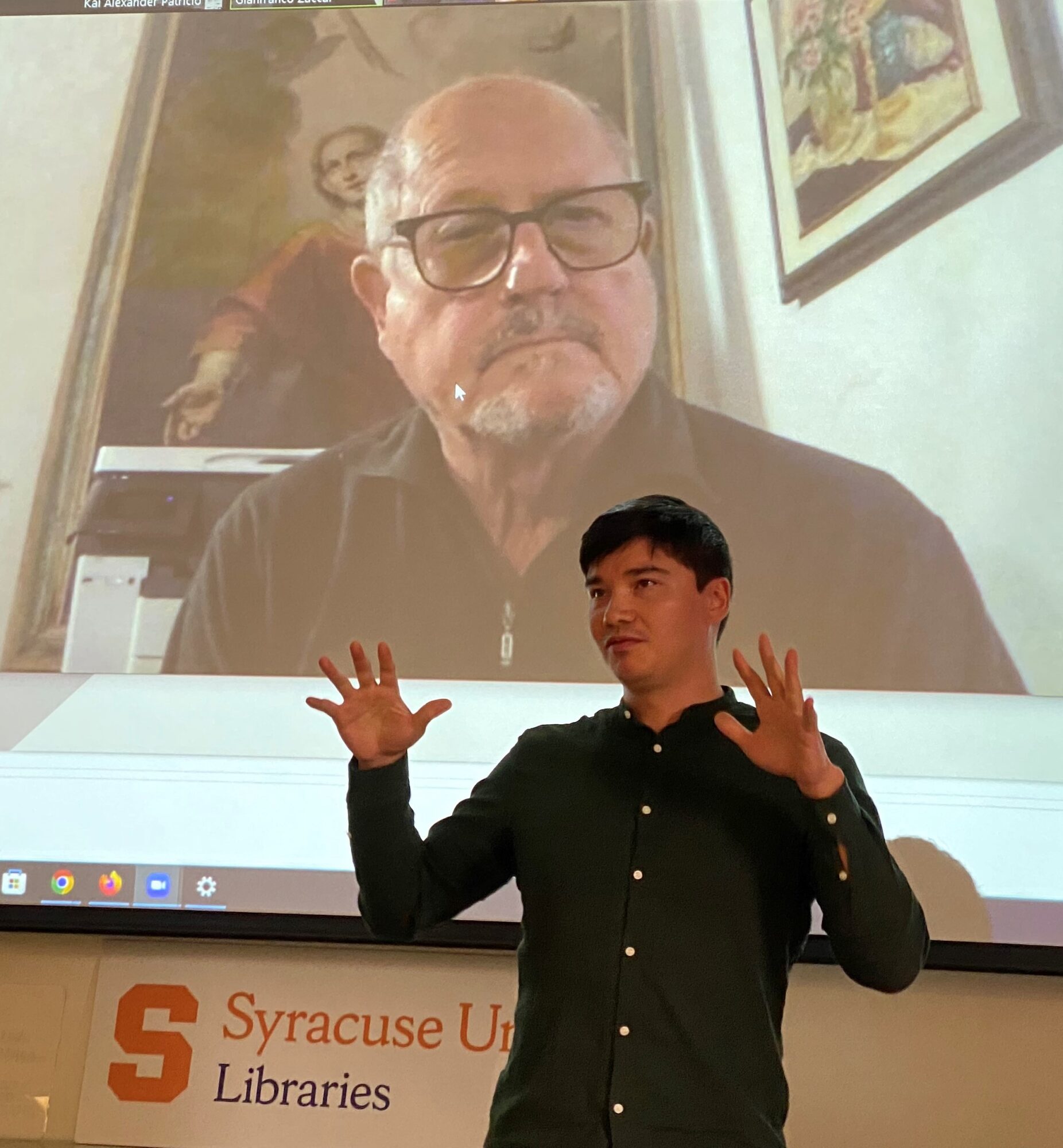
Kai Patricio G’23 led a first of its kind Design Led No Code Hackathon this month, funded through the Intelligence ++ program and a gift from Gianfranco Zaccai and the Zaccair Foundation for Augmented Intelligence. The Intelligence ++ program is a collaboration between VPA’s School of Design, the School of Education’s InclusiveU program and SU Libraries’ Blackstone LaunchPad.
Winners were:
1st Place: Northstar
Group Members: Naiyou Wang, Will Shick, Jiaqi Liu, Lang Delepa
Northstar helps users navigate in a new space with the consideration of safety issues and accessibility for neurodiverse people. It features a digital Navigator that can help offer an additional layer of safety and community inclusion for users.
2nd Place: Scout
Eric Hong, Yi Zhou Zhang
Scout is an indoor mapping service that is designed to help people ease their anxiety by having a virtual indoor map that informs the user with useful information like, accessible paths, general directions, and crowd flow.
Not placing, but distinction:
Optimal Assess
Alex Levy, Rabia Razzaq, Amaan Khan
Optimal Assess is a web progressive application that facilitates students by providing them a platform to understand how well they respond to different modes of Q&As and to self-evaluate based on how they answer to the prompts provided to them. The responses from the app (specifically, how the students did on each type of question and how the students ranked their preferred testing method) is sent to a dashboard that the professor or educator can look at to see what test formats the students did best on, as well as what methods the students self-reported that they liked the best.
Jump
Sise Deng, Xinyi Wang, Sicong Ma
Jump is a community platform app for InclusiveU students to jump into the community and get involved in SU. It features community posting, a skill share platform, and a friends feature for following other people’s activities.
All teams expressed interest in moving forward with their projects to the next semester and the Intelligence++ competition.
The competition was based on three design briefs:
- Community Inclusion
Design a digital tool or interface that would empower neurodiverse individuals to better communicate with an unfamiliar environment or unknown individuals and support community inclusion & safety.
Does your design cultivate a more supportive environment and make foreign spaces more legible to all community members? Does it allow for the opportunity to ask for aid? How is the neurodiverse person communicate with the environment and its individuals? What are the benefits of a digital intervention in this area? What are the limitations of digital mediums? How does this improve safety for the user?
- Family
Working within the context of a home support system, design a digital tool, product, or service that can be utilized by families that will assist in communication and expression for individuals on the spectrum.
What strengths and weaknesses do digital interfaces allow to support communication with neurodiverse family members. What types of information could you provide that could support a child or family members on the spectrum? What are the places or contexts that your design could be best utilized? What is gained through your proposed tools? What is potentially lost or needs to be considered?
- Education
The diagnosis, assessment, and professional communications with neurodiverse individuals is often narrow in scope and one directional. Instead of focusing on the complexities of different thought processes and neurodiverse perspectives; the focus can be too much on what a neurodiverse person cannot do according to societal standards of cognitive function.
Design a digital tool/interface that could offer the opportunity to highlight different approaches to testing and promote different ways of demonstrating understanding.
All applicants had to answer the questions:
- How do you imagine your tool being used?
- What are the environments and who are the practitioners? How does a digital interface enhance the testing process?
- Who might be the practitioners of your tool/interface? How can you state the efficacy of your tool(s)?
Event facilitators were Quinton Fletchall and Max Mirho
Quinton Fletchall: Senior Design Researcher at Conifer Research
Quinton is passionate about design research as it provides opportunities to be curious and explore different topics. As a researcher, he has worked on a wide range of topics including, but not limited to: personal finance, medical diagnostic testing, ethics in tech innovation, health insurance, automotive design and manufacturing, company culture, and various consumer products. While in Syracuse, Quinton taught in the SU IID program and was a project coordinator for the SU Connective Corridor.
Max Mirho: No Code Expert & Entrepreneurship Educator, founder, Make with Max
Max is a content creator and educator specializing in building business ideas from scratch without programming or code. He builds tiny startups publicly online to teach how entrepreneurship functions in the real world. Max has spoken at over 80 schools around the world, including Harvard and Princeton, and regularly mentors students on how to start their own companies. His goal is to democratize entrepreneurship for all, and make building projects and companies more accessible.